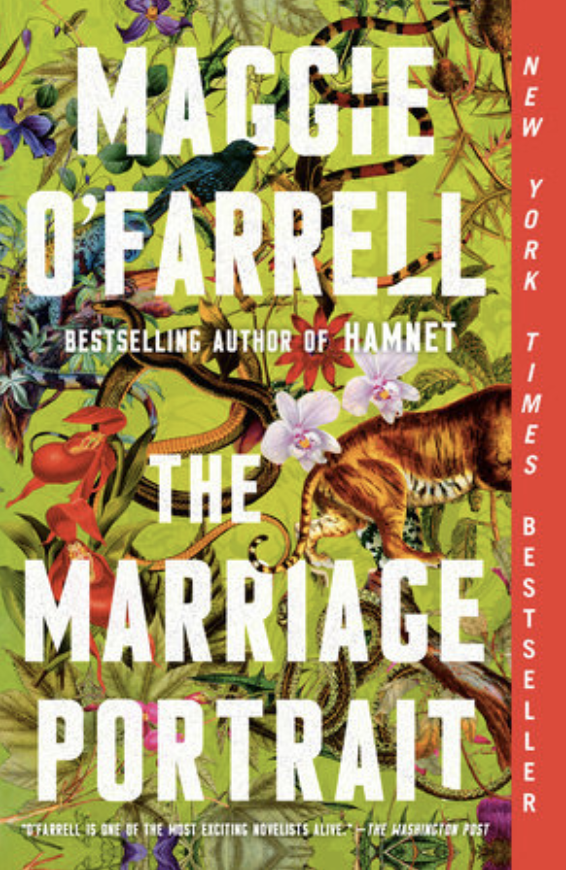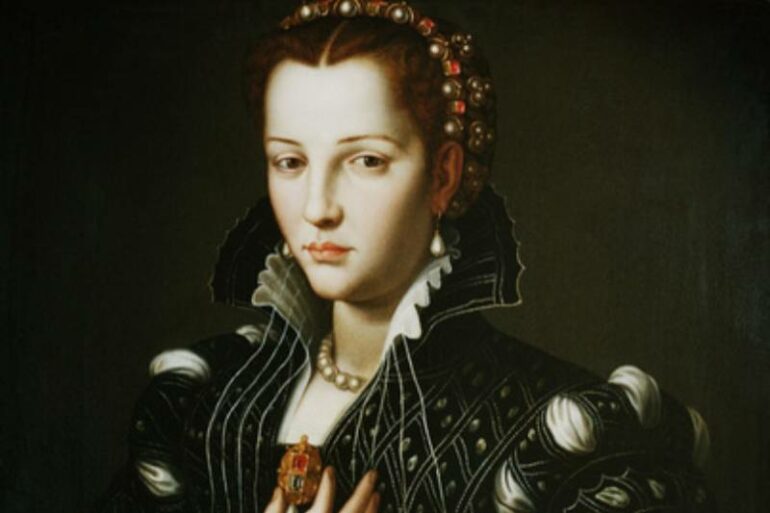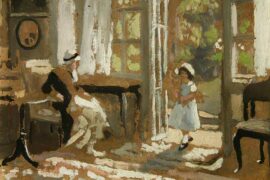Maggie O’Farrell’s The Marriage Portrait, narrates the life and fate of Lucrezia de’ Medici, daughter of Eleonora and Cosimo I, from her childhood to her marriage. The author of the award-winning Hamnet pens this work of historical fiction, mostly based on the true story of Lucrezia and Alfonso II in Renaissance Italy. Interestingly, Lucrezia and her husband’s story were the inspiration behind one of the most known poems of the time, »My Last Duchess« by Robert Browning.
By Arezoo Izadi
Picture: via Wikimedia (cropped), CC0
Growing up as a quiet and »strange« child in between her other six siblings, Lucrezia is the black sheep of her family. From a young age, she shows immediate and great interest in art and painting and a fascination with wild animals. This leads to her painting beautiful pictures of classical images and stories that she learns and getting close to the tigress her dad has in his keeping. The tigress and how Lucrezia identifies so essentially with it becomes a motif throughout the novel, one that portrays her resilient, strong and untamed nature when confronted with injustice.
End of Childhood and Innocence
The quick narrative of Lucrezia’s childhood leads to a more detailed one of her marriage and married life to Alfonso II d’Este, later known as the Duke of Ferrara. Their hasty marriage occurs due to an unfortunate turn of fate, leading to Lucrezia becoming the Duchess of Ferrara at the age of 15. At such a young age, Lucrezia is thrown into the lion’s den for the sake of two dynasties merging with one another. Therefore, she must become a woman while still a child in spirit. After their marriage, the Duke patrons II Bastianino, a great painter of the age, along with his assistants, Jacopo and Maurizio, to paint a »marriage portrait« of Lucrezia in an attempt to immortalize his great accomplishment.
»I want everyone who looks upon this to know instantly what she is: regal, refined, untouchable.«
The novel paints the condition of womanhood and girlhood in how Lucrezia is expected to produce an heir for the survival of the dynasty, and in how she has everything ripped from her in order to benefit the men’s power as well as the dynasties. Although the story belongs to the 1550ies, one can easily relate to it in how it is parallel to the way women are treated in the microcosms of society. However, one can also feel empowered by Lucrezia’s character as she fights for her art, heart and at times, for her life.
Sympathy and Mystery
While one can be baffled by the number of names and characters in the beginning of the story, the stunning narrative and writing make the reader familiar with them rather quickly. Not all characters are present consistently throughout the story, but that does not weaken any of their mystery and depth. The nice flow of writing leads to the story being read as easily and smoothly as watching a TV show.
Sofia, Lucrezia’s nurse growing up, guides her through childhood and secretly helps her to delay her marriage. The reader is left feeling gratitude and affection for her as a result. She even teaches Lucrezia a secret language that will later save her fate. Lucrezia’s parents, Eleonora and Cosimo I, are the blueprint of a successful marriage for Lucrezia, one filled with affection and communication, both of which she fails to own later.

The Marriage Portrait
Penguin: 2023
352 Pages, $17.00
There are many characters who make the reader be filled with sympathy and endearment, nevertheless, some other characters such as Alfonso II and Leonello Baldassare, his friend and companion, are both mysterious and ominous. Witnessing their violent and wicked side and the manner in which they transform into caring beings with the snap of a finger, makes the reader concerned for any character present around them, especially Lucrezia.
Symbolism Between the Lines
The great symbolism of animals throughout the book is apparent from the very beginning, more specifically, since the spark of fascination of Lucrezia with the wild tigress. The tigress is all she can think about in her waking moments, even when it is gone. Following that, the image of animals follows Lucrezia wherever she goes, from Boars and monkeys to birds and doves. This chain of symbols reaches its peak once Alfonso expresses his discontent with Lucrezia, asserting that the beast inside her will not be tamed no matter what.
»There is something at the core of her, a type of defiance. There are times when I look at her and I can feel it – it’s like an animal that lives behind her eyes (…) It makes me fear that there will always be a part of her that will not submit or be ruled.«
Apart from that, the mythological references throughout the novel would be fascinating to any reader with an interest in Greek mythology. Lucrezia mentions that her father cared that his children be educated in history and mythology. For that reason, there are mentions of Achilles, Hercules, and more significantly, Iphigenia, daughter of Agamemnon who was sacrificed in the Trojan War. It is hard not to notice the similarities between Iphigenia and Lucrezia’s story.
Power of Art
Through her life with all its ups and downs, one element that stays stable during most of the narrative is Lucrezia’s art and its healing power. She starts drawing and painting in her classes, as she is feeling isolated like a stranger among her own siblings, or once she understands she will not see the tigress anymore. She seeks art when she gets into an undesirable marriage and everything that happens afterwards. Her art gets entangled with her soul so much that having it ripped from her turns her into a wandering person with no purpose. This in turn leads to the unexpected and shocking ending of the novel.
Reading The Marriage Portrait with O’Farrell’s remarkable writing and narrative style provides a pleasing experience for any reader. Although the novel is in the genre of historical and biographical fiction and catered to the interests of a target audience interested in history, mythology and art, its narrative and plot prove to be fascinating to any reader, especially since one can relate it to one’s own experience and today’s world.






